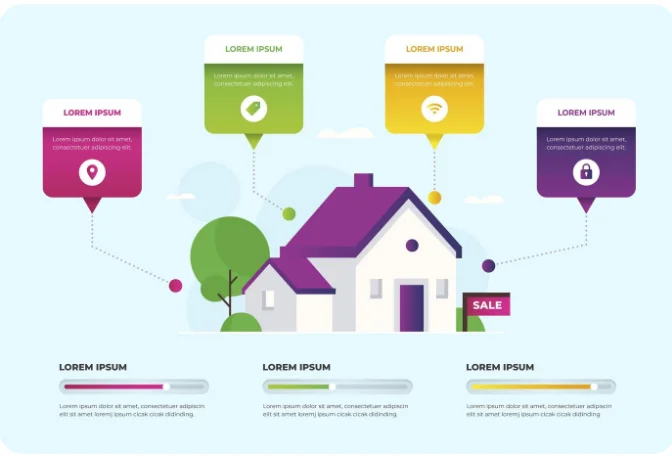
The demand for real estate in urban centers is shaped by a combination of economic, social, and infrastructural factors. Whether it’s job opportunities, transit accessibility, or lifestyle amenities, several key elements influence homebuyers’ and investors’ decisions. Understanding these drivers can help buyers make informed choices and allow investors to identify high-potential markets.
Economic Growth and Employment Opportunities
One of the strongest indicators of real estate demand is a city’s economic health. A thriving job market attracts professionals and families looking for stable employment and career growth, increasing the demand for housing. Cities with major business hubs, corporate headquarters, and tech or financial districts often see continuous real estate appreciation due to the influx of skilled workers seeking homes close to their workplaces.
A prime example of this is 101 Spadina, located in the heart of Toronto. The development benefits from proximity to the city’s Financial District and growing technology sector, attracting professionals who prioritize accessibility and work-life balance. As Toronto continues to evolve as a global business hub, properties in well-connected downtown locations are expected to see sustained demand and long-term value appreciation.
Infrastructure and Public Transit Access
Efficient public transportation and infrastructure significantly impact real estate demand. Properties near transit lines, major highways, and airport hubs tend to attract buyers who prioritize convenience and mobility. Cities investing in smart infrastructure projects, such as subway expansions and high-speed rail systems, often see a direct impact on property values in surrounding areas.
Quality of Life and Lifestyle Amenities
Beyond employment and transit, lifestyle amenities play a major role in shaping demand. Walkable neighborhoods with entertainment venues, dining options, parks, and cultural institutions are highly desirable among buyers. Urban developments that integrate green spaces and mixed-use planning create vibrant communities, making them more attractive for long-term residency.
The Influence of Government Policies
Government incentives, zoning regulations, and tax policies also affect real estate demand. Cities that implement favorable policies for homebuyers, such as first-time buyer incentives or rent control measures, tend to have more stable housing markets. Similarly, investment-friendly policies encourage real estate development, leading to increased supply and balanced market growth.
The Impact of Technological Advancements
Technology continues to reshape the real estate industry. The rise of smart homes, energy-efficient buildings, and AI-driven property platforms influence buyer preferences and market trends. Cities that embrace innovation and digital infrastructure often attract more investment, contributing to higher demand and increased property values.
Future Trends in Urban Real Estate Demand
As urban populations grow, city planners are focusing on sustainable housing solutions, mixed-use developments, and community-driven projects. The demand for flexible living spaces, remote work-friendly environments, and wellness-focused communities is shaping the next wave of real estate investments. Buyers and investors who stay ahead of these trends can capitalize on emerging opportunities in high-demand urban areas with the guidance of experienced buyers agents gold coast.
Additionally, rising concerns about climate change are influencing real estate decisions. More buyers are seeking energy-efficient homes and buildings with sustainable features such as green roofs, rainwater harvesting systems, and smart climate control. Cities prioritizing eco-friendly initiatives will likely see increased property demand in the coming years.
The Role of Smart Urban Planning in Real Estate Demand
City planners and developers play a crucial role in shaping real estate demand through forward-thinking urban planning. Mixed-use developments, improved public spaces, and pedestrian-friendly initiatives enhance the appeal of a city and contribute to sustained housing demand. Areas with well-designed public spaces, such as parks, bike lanes, and cultural hubs, tend to attract a broad range of buyers looking for vibrant and livable communities.
Final Thoughts
Real estate demand in a city is driven by a mix of economic growth, infrastructure investment, and lifestyle factors. Areas that benefit from strong business districts, transit connectivity, and urban amenities will continue to attract homebuyers and investors. Understanding these key drivers can help buyers make informed decisions and capitalize on real estate trends in competitive markets. As cities evolve, those investing in well-located and future-ready properties stand to gain the most from long-term urban development trends.

Stand Out This Canada Day with Smart Print Marketing

What Documents Are Needed for a Vehicle Loan Approval?

The Dropshipping Business In 2025 And Its Current Trends

AI in Marketing Is No Longer a Buzzword — It’s the Strategy

The Psychology of Trophy Colors and Shapes: A Deep Dive for Trophy Makers

Awami Greens in Blue World City Plots for Sale | 2025 Guide

From Boom to Balance: Is the UK Property Market Cooling Off?

How Easements Can Affect Your Property Rights?








